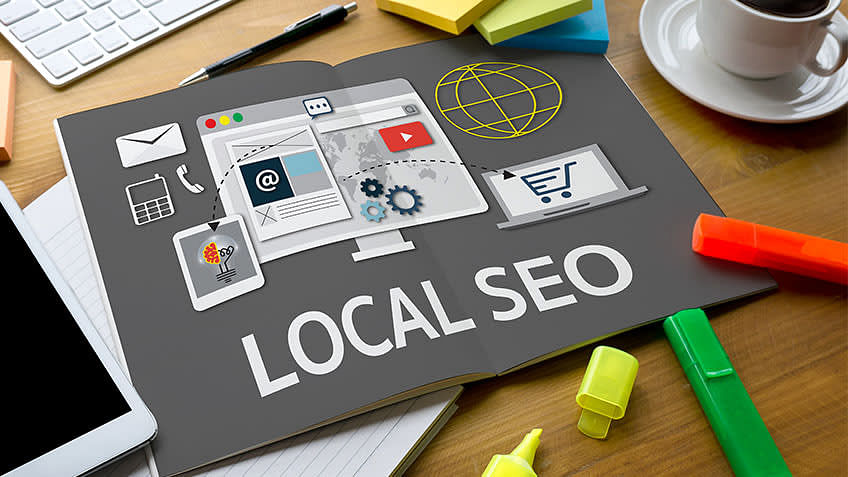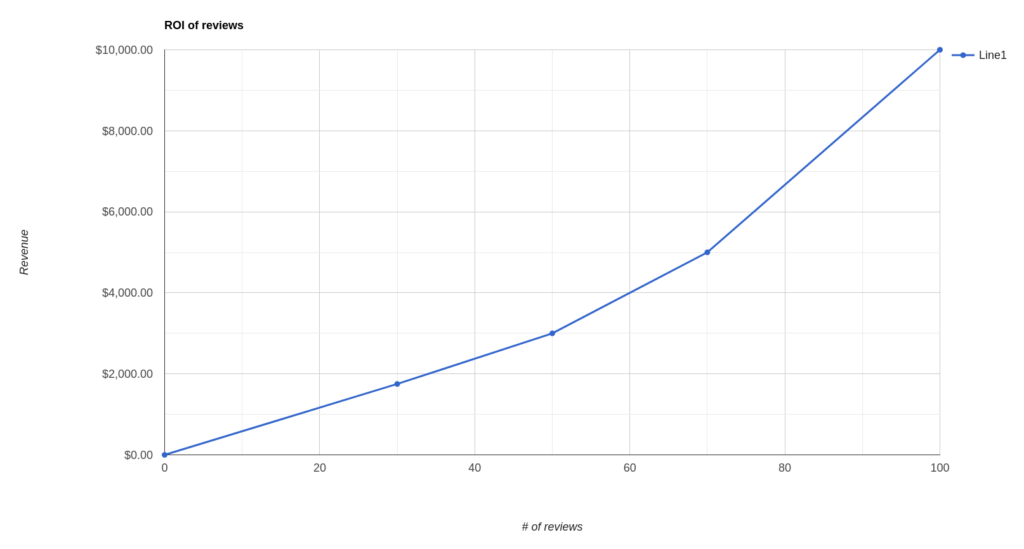What is local SEO?
Local SEO is the process of improving search engine visibility for local businesses, primarily those with brick-and-mortar locations. By following local SEO best practices, businesses can improve organic traffic from searches performed by customers in nearby areas.
Search engines use local content, social profiles, links, and citations to determine the most relevant results for users looking for local information. Businesses can use this to their advantage by optimizing their content and online presence for local searches.
Why Is Local SEO Important for Small Businesses?
If you’re not utilizing Local SEO for your Small Business, you’re missing out on a lot. Here are some facts to give you an idea of how important it is:
- 46% of all Google searches are for local business information
- 61% are searched on mobile
- 250% increase since 2017 for “near me” searches on mobile
- 97% of consumers go online to find local services
- 78% of local mobile searches result in a purchase
- 50% of consumers who conducted a local search on their smartphone visited a store within a day
I’m sure you can see how essential Local SEO is for small businesses by now.
10 Local SEO Tips for Small Businesses
1. Optimize for Google My Business
There’s no other way to say it: if you want your local business to be visible on Google Search, you need a Google My Business profile. Google is very generous in terms of showing content from its services on its SERPs (Search Engine Results Page), so having a profile is essential.
Although Google automatically adds new businesses to its database within a year or so of their opening, the information on their profile may not be accurate.
Here are a few ways to make sure your Google My Business profile is set up for success:
- Claim your Google My Business page
- Complete profile and publish your listing
- Add photos/videos of your business products/services to your profile
- Add events, offers, etc. via Google Post to your profile:
- Encourage current customers to write and share reviews
- Make sure the alert is set for new reviews and respond to reviews and ratings in a professional and timely manner.
- When responding:
- Be authentic
- Be specific about the service they received and the location
- Thank the customer
- When responding:
2. Claim All Business Directories
Google My Business is the most important platform for your Local SEO strategy, but it’s not the only one. You should also consider claiming your Yelp page. Here are some statistics about Yelp that may convince you:
- Yelp ranks for 92% of local search queries
- Yelp Is the #1 Site for Public Directories Online
- 45% of customers are likely to check Yelp reviews before visiting a business
- 92% of Yelp Visitors Make a Purchase After Visiting
Luckily, claiming your Yelp listing is a simple process. And while you’re adding Yelp, you should also consider Facebook, Bing, and Yellow Pages.
3. Local SEO Audit
Now that you have laid the groundwork, let’s take it to the next level. We are going to take a look at your competitors and see how we can outrank them for your business location in the SERPs.
- Do search for your business and location and see how it displays and if the information is accurate.
- Run a citation audit on all top directories to see if your business is listed and if the information is accurate.
- Search for your target keyword and location in your industry and check out the top 5 competitors. How do they fare against you?
4. Targeting Local Keywords
There is no way around it, targeting keywords can be time-consuming and challenging. However, this is a necessary step for any successful SEO campaign.
Luckily, it’s much easier for local businesses to target localized keywords vs non-localized ones.
For example, say you have a kid’s clothing store. It would be more difficult to outrank companies like Target or Khols for a keyword like “kids clothing store”, however, you’ll have a better chance when you optimize your website for keywords with a city or zip code, like “kids clothing store in Los Angeles”.
Fun Stat: “Near me” or “close by” type searches grew by more than 900% over two years and 78% of location-based mobile searches result in an offline purchase.
Action item: Pick keywords that relate to your business, then optimize your site with those keywords and city or zip code. Also, consider optimizing for other cities within 10-15 miles of your location.
5. Encourage Customer Reviews
Have you recently purchased or visited a store without reading a review? Probably not. Almost 90% of all consumers that read reviews before going any further on the buying journey with a company.
Action items:
- Make sure you claimed your listing on Google, Yelp, and other top directories.
- Make sure information is accurate.
- Offer an incentive like a discount or complimentary item for a future purchase if they leave a review. DO NOT offer in exchange for a positive review. Google, Yelp, and top directories have ways to find out, and they will remove your listing, so it’s a wasted effort.
- Respond to all reviews in a timely matter, both positive and negative. Having negative reviews isn’t inherently bad. Customers are more interested to see how you respond and resolve the issue.
6. Create Local Content
Google’s ever-evolving algorithms mean that content creators can now focus on writing for their audience. Instead of writing for a large audience; nowadays, it’s more beneficial to write about local or industry news to attract a more targeted readership.
You’ll want to establish yourself as a local authority for your industry, provide local gatherings, news, and other content on your blog. This will help you build a following and gain credibility in your field.
7. Mobile-Friendly
Aside from how it affects your Google ranking, did you know 61% of mobile searchers are more likely to contact a local business if they have a mobile-friendly site? You can see why it’s critical to make sure you’re site is mobile-friendly.
8. Page Structure
Local listing and targeting keywords for local are great but it’s part of the Local SEO strategy. Often overlooked by small businesses is the page structure of their site.
I would love to say these were minor and not significant to SEO but I would be lying. These are major elements/components of SEO.
Here is the breakdown of the percentage of missed opportunities to take advantage of it by element:
- Title tag: 99 percent
- Robots.txt: 88 percent
- Sitemap.xml: 73 percent
- Meta description: 72 percent
- H1: 68 percent
- Schema.org: 44 percent
9. Social Media
A recent study found that customers who engage with businesses on social media not only have a deeper connection and commitment to the brand but also spend 20%-40% more in the long term.
Action items:
- Evaluate each social media platform and decide which is right for your business and target market.
- Create engaging content to interact with your audience.
- There are 3rd-party tools available to help schedule and automate posts.
- Setup alerts and respond to comments.
- Use online software like Canva to help with creating assets.
10. Local Business Events
Sponsor events, have volunteers for a day, and collaborate with local non-profit organizations. This will give you more press and brand awareness, as well as possible inbound links to your website.
Should I hire an agency for Local SEO?
If you’re able to budget for it, then it may be a worthwhile investment. Ultimately, it depends on how much time and money you’re willing to put into learning and implementing the tool.
How much local SEO cost for small businesses?
Pricing varies. Please take a look at the our Local SEO pricing for more information.
Final Thoughts
Local SEO is an important part of any SEO strategy for local businesses. It can help your audience find you when they search online if you have a storefront or service area. It will take time to put it together but you’ll be glad you did.





